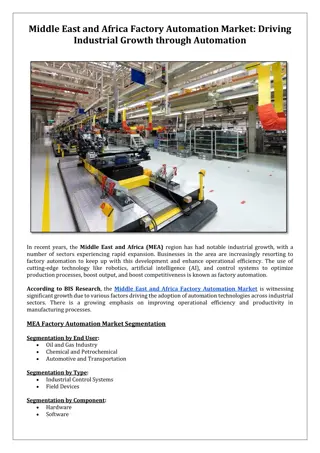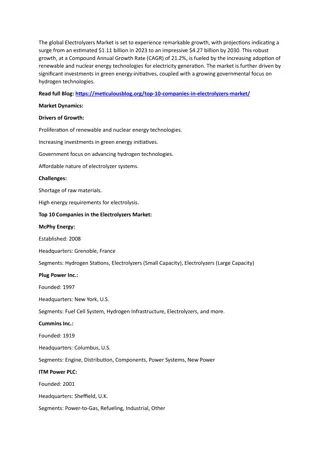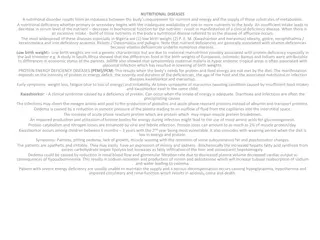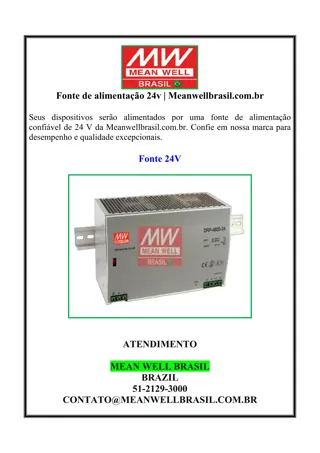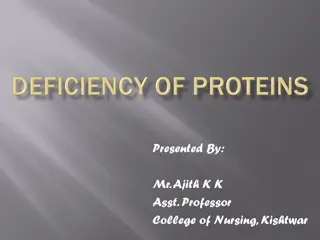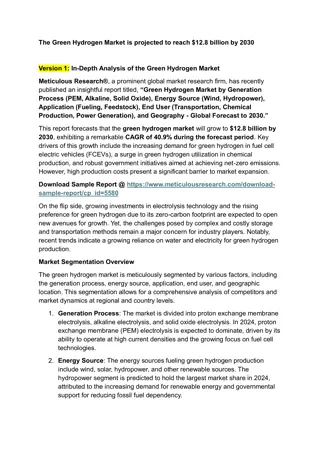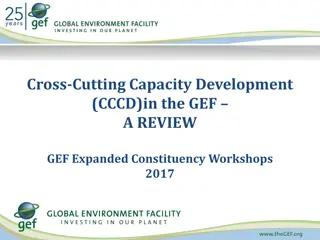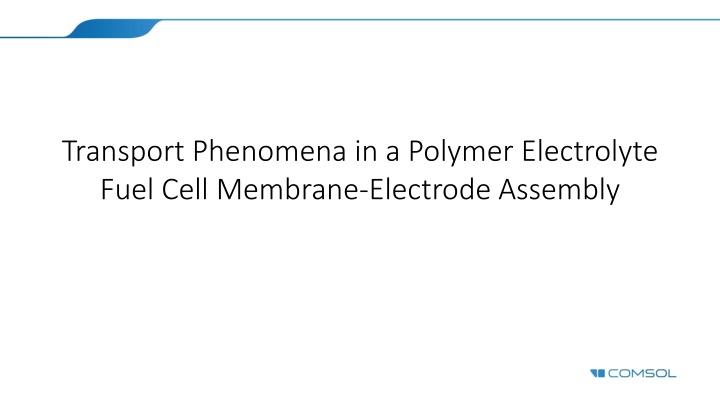
Water Management in Polymer Electrolyte Fuel Cells
Explore the crucial importance of water management in Polymer Electrolyte Membrane Fuel Cells (PEMFC) for optimal performance, balancing between too wet and too dry conditions to ensure conductivity and efficiency. This tutorial delves into how relative humidity impacts PEMFC performance through mass transport modeling in gas and polymer phases. Discover the dynamics of water activity, conductivities, coupled phenomena, and modeling interfaces in the context of PEMFC performance optimization.
Download Presentation

Please find below an Image/Link to download the presentation.
The content on the website is provided AS IS for your information and personal use only. It may not be sold, licensed, or shared on other websites without obtaining consent from the author. If you encounter any issues during the download, it is possible that the publisher has removed the file from their server.
You are allowed to download the files provided on this website for personal or commercial use, subject to the condition that they are used lawfully. All files are the property of their respective owners.
The content on the website is provided AS IS for your information and personal use only. It may not be sold, licensed, or shared on other websites without obtaining consent from the author.
E N D
Presentation Transcript
Transport Phenomena in a Polymer Electrolyte Fuel Cell Membrane-Electrode Assembly
Background and Motivation Water management in the Polymer Electrolyte Membrane Fuel Cell (PEMFC) is of crucial importance for performance since Too wet conditions may result in transport limitations of the gases due to flooding of liquid water Too dry conditions will result in low conductivity of the polymer electrolyte In addition, since water is produced, the water humidification level changes with the cell current This tutorial models how the relative humidity of the inlet gases impacts the performance of a low-temperature PEMFC The model accounts for mass transport in the gas and polymer phases coupled to the current distribution in the electrolyte and gas-diffusion electrodes (GDEs)
Geometry The model is in 1D, using seven different domains 2 Gas Diffusion Layers (GDLs), 200 m 2 Microporous Layers (MPLs), 20 m 2 Catalytic Layers, 10 m Membrane, 30 m
Polymer Conductivity, Water Uptake and Water Activity Water uptake vs activity Conductivity vs water uptake
More Coupled Phenomena Species (water, hydrogen, oxygen) and current source terms depends on local concentrations and potentials Polymer-gas phase water flux depends on water activity on each side Polymer water diffusivity depends on water uptake Hydrogen cross-over through membrane depends on hydrogen gas concentration on anode side
Modeling Interfaces Secondary Current Distribution Potentials, current conduction and kinetics Hydrogen cross-over current added as analytical expression Transport of Concentrated Species Gas phase mass transport Maxwell-Stefan binary diffusion Transport of Diluted Species Polymer water transport Diffusion by Fick s law
Results Simulated polarization curves generated using a Stationary study with an Auxiliary Sweep Best performance for 95% relative humidity one each side Impact of lowering humidity on anode more severe than on cathode

